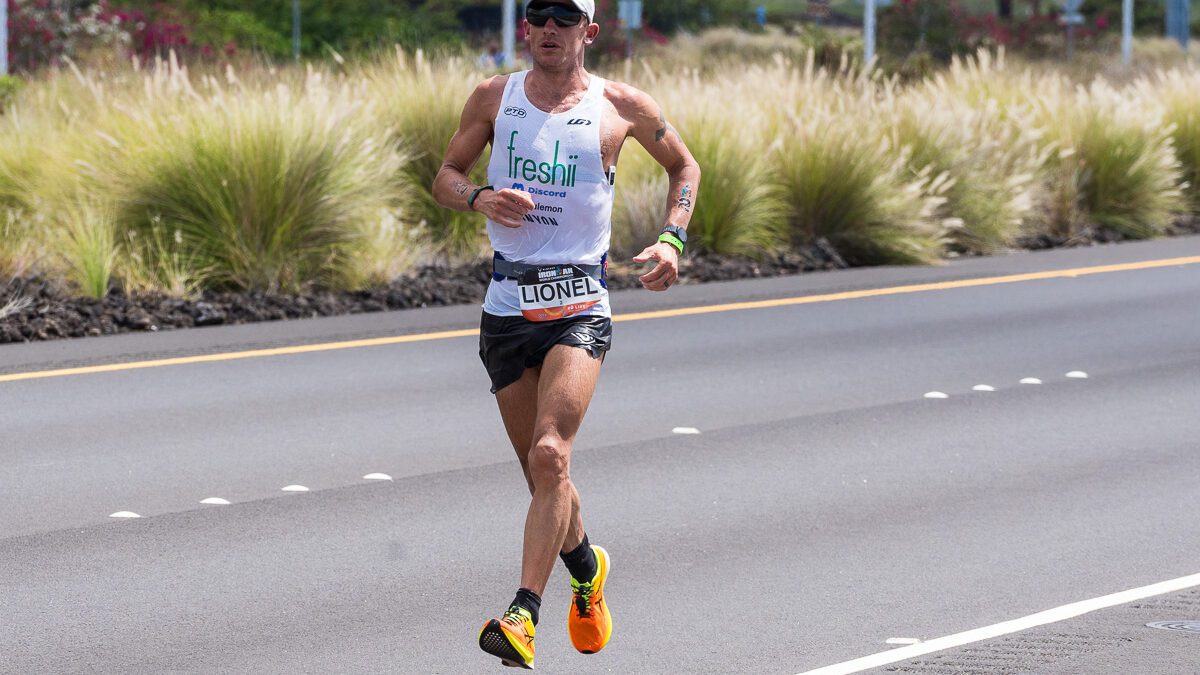Should you do all your interval training in carbon-plated shoes? Lionel Sanders doesn’t think so
Carbon-plate shoes help you run faster and can be easier on your body, but should you always run in them?
 Photo by:
Kevin Mackinnon
Photo by:
Kevin Mackinnon
The video’s title seemed to imply that Canadian triathlon star Lionel Sanders wouldn’t ever run in a carbon-plated shoe again, but that’s not the case – in his latest video (see below), the two-time Ironman World Championship runner-up suggests that using the speedy shoes should be left to race day.
“Most of my running life I always ran in normal shoes and you just brought out the race shoes on race day,” Sanders said. “Maybe you do like one rep race week in the in the racing flats or the spikes, but otherwise you never use race shoes in practice. Somehow we’ve all grown addicted to them – maybe not all, but many of the people I know… After 3 years I feel like I’ve lost something from doing that, and so I would like to get it back, and then I’d like to have that nice little psychological boost.”
In the video Sanders runs through a track workout that included sets of 10 x 200 m, 5 x 400 m and another 10 x 200 m. While his times would be the envy of pretty much any age group racer, Sanders noted that his splits were considerably slower than if he had been wearing a carbon-plated shoe.
Carbon-plate revolution
Nike started the carbon-plate revolution with the introduction of the Vaporfly in 2017. That shoe featured a full-length carbon plate, and athletes wearing the shoes started to shatter running records and dominate all the major running events around the world. Nike even named one of their shoes (the Vaporfly 4%) based on the amount the shoes were supposed to improve your running efficiency. It wasn’t long before triathletes were jumping on the carbon-plate bandwagon, with some pros even buying Vaporfly shoes and wearing them in races, even though they were sponsored by other companies. Now all the major shoe brands have their own carbon-plate offerings.
But should you wear the shoes all the time, or even for all your speed sessions?
It’s certainly not hard to argue that the “trampoline” effect many of these shoes offer doesn’t just help with speed, but also by reducing the stress on your body from the impact of running. That’s got to be good for regular training, too, right?
American podiatrist Mark Mendeszoon told wellandgood.com that because the carbon-plate “super shoes” change your biomechanics, pushing you forward, your feet and ankles don’t have to work as hard.
“So even though you may be running faster, you may be negating the natural motion of the foot and ankle biomechanics,” Mendeszoon said.
Typically carbon-plate shoes aren’t designed for lots of use, either. So, while sponsored athletes might have a steady stream of shoes available, those who aren’t getting their shoes for free will find switching out their expensive carbon-plate models will be an expensive endeavour.
Other options
Some companies have incorporated carbon-plates into training shoes – Nike’s Zoomfly, New Balance’s FuelCell SuperComp Trainer and Hoya’s Bondi X, for example – so you can get the benefits of the carbon-plate technology in a more durable shoe. Asics’ SuperBlast shoes (see link below) offer many of the cushioning and light-weight benefits without the carbon-plate, too.
Race-day boost
Sanders point about saving the speedy shoes for race day is a good one – there’s nothing quite like the feeling of being able to go faster on the day when it really counts. And, as he points out in the video, it’s important to have run in your race shoes enough that you’re body will be able to handle the physical changes the carbon-plate speedsters will put your body through.
